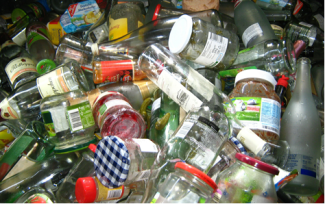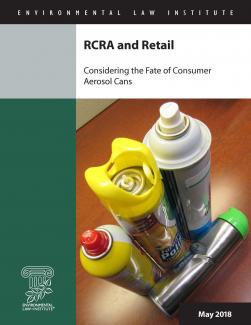These stark words from the United Nations imply an economic and environmental catastrophe to come: “Consumption and production drive the global economy, but also wreak havoc on planetary health through the unsustainable use of natural resources. The global material footprint is increasing faster than population growth and economic output.” To address this problem, the authors of the 2020 UN Sustainable Development Goals declare: “Urgent action is needed to decrease our reliance on raw materials and increase recycling and ‘circular economy’ approaches to reduce environmental pressure and impact.” Moving toward a circular economy—one founded on the precepts of designing out waste and pollution, on keeping products and materials in use, and restoring natural systems—could limit the devastation of planetary health. But that is not enough. Even with 100 percent recycling, humanity’s consumption of virgin resources will continue to sustain ever increasing demand for products and services, including basics like energy. Without reducing consumption, scarcity will always loom for many key supports of our economy.
Some scientists believe that our efforts may come too late. A 2017 article in ACS Sustainable Chemistry & Engineering provides an analysis of mineral reserves which, for example, indicates that 10 essential metals are “very scarce” (less than 20 years of supply) and 11 are “scarce” (up to 40 years). These findings show that little time remains to change resource demand. Another research team, writing in Science, determined that pollution from chemicals and plastics already exceeds safe global operating levels for human societies to develop and thrive.
Activists outraged over images of ocean debris fields call for laws to ban single-use plastics and thus drive circularity. Many companies and individuals strive to make greener choices and to recycle packaging and other materials. There is much to praise in such behavior. But we argue that business and society must move beyond recycling to change consumption patterns if policymakers want to build a sustainable society within planetary boundaries.
We propose a resource efficiency approach to circular economy aspirations, enabled by rethinking value chains and increased transparency and traceability. To do so, we explore examples of innovation in circular business models and partnerships, highlighting opportunities for policymakers to support private firms and society in general in moving toward resource efficiency.
Pogo’s famous observation that “we have met the enemy and he is us” still resonates more than half a century later. The essential challenge of circularity is peoples’ demand for goods and energy. The United Nations tracks demand in terms of material footprint, which grew by 17 percent between 2017 and 2020. The footprint of a person in a high-income country is more than 10 times greater than that of a person in a low-income country, based on 2015 data. These figures illustrate in a general way the growing and unequal demand for resources. To examine demand in a less abstract way, let’s look at an essential part of this footprint, clean drinking water, and the current debate about single-use plastics.
Almost everybody in the United States—around 99 percent of the population—has access to safely managed drinking water. Access to clean water is not uniform for the 1 percent who are left out. A lack of safe water correlates to rurality, poverty, indigeneity, education, and age. Bottled water can be a necessary, if stopgap, solution to unsafe or inadequate private wells or public water supplies, if it is available and affordable.
However, many people in the 99 percent with access to safe and inexpensive drinking water still chose to drink bottled water. Between 2005 and 2015, demand for bottled water grew by more than 47 percent in the United States despite the widespread availability of safe public water supplies and wells. The International Bottled Water Association explains, “A 2019 Harris Poll conducted for IBWA shows that when asked about their general opinion of bottled water as a beverage choice, 84 percent of Americans had a ‘very positive’ or ‘somewhat positive’ opinion of bottled water. . . . This poll finding is supported by the fact that bottled water is the No. 1 packaged drink in the United States for the fifth year in a row (by volume).”
The Harris Poll also found 94 percent of Americans buy bottled water, and 91 percent want it available where other drinks are sold. If bottled water is not available, the survey found that 74 percent of people said they would choose another, less healthy, packaged drink—not water from a drinking fountain or tap, even if filtered.
A study of college students in the northeastern United States concluded that purchasing bottled water tends to be a habit that reflects perceptions about the quality of bottled water versus tap water. It relates to perceptions of convenience, taste, and health factors but, in the words of the authors, “objective knowledge about the environmental impact of bottle[d] water production and consumption is, at least in the current data set, irrelevant to purchase intention.”
Contrast such purchasing decisions with the way people in the United States talk to pollsters about single-use plastics, the material commonly used to package water. In a 2021 survey, 55 percent of respondents agreed that single-use plastics should be banned as soon as possible. A second survey found that 82 percent said they are concerned about plastic pollution and its impact on the environment and our oceans; 77 percent agreed that companies need to stop producing so much single-use plastic. Eighty-one percent of respondents broadly supported both national and local or state policies that would reduce single-use plastics.
In response to such concerns, multiple states and municipalities have taken up the cause of banning single-use plastic water bottles. But such concerns about the environmental impacts have not yet translated to effective recycling. According to EPA, using 2018 data, only about 29 percent of plastic bottles are recycled in the United States.
Bottled water is not alone. It is an example of the disconnect between consumption patterns and sustainable consumption preferences. Recognizing this gap, companies offer to produce recyclable single-use options to meet consumer expectations.
It’s an instinctive response to sustainability concerns to substitute out materials considered harmful and commit to recycling. But our instincts do not always lead to substantive solutions. Recycling comes at an environmental cost: no recycling process can be completely efficient and the transport and recycling of waste uses energy and generates greenhouse gas emissions. Its success depends on numerous factors, including consumer acceptance, adequate infrastructure, and economics, and even if well adopted will still have important environmental consequences.
Continuing with the example, bottled water is commonly available in plastic containers and sometimes available in paper cartons or single-use aluminum bottles. The actions of one company illustrate the types of actions taken to make products more sustainable and some of the limits of those actions. This company positions its product as particularly sustainable because of its use of “infinitely recyclable aluminum” bottles and cans and its partnership with RePurpose Global to remove one plastic water bottle from the ocean for each bottle of its product sold. The product embodies commitments to using more sustainable materials and action to remove pollution, wrapped in a strong brand image.
Dig into the details, however, and the sustainability benefits become less clear. Its bottles comprise 69 percent recycled aluminum, according to the company web site. But these single-use containers exert a demand for virgin resources for the 31 percent missing metal. The company offers its product on a monthly subscription basis, per its FAQs, a business model with ongoing resource demand and ongoing generation of waste. While aluminum is readily recyclable, and perhaps many consumers of this brand do, most consumers in the United States do not. According to EPA, only 17 percent of aluminum cans in municipal solid waste were recycled in 2018 (the most recent year for which data are available), well below the more than 50 percent figure the company cites.
Looking beyond the container, bottling water typically removes water from one watershed for transport around the country or the world. This company sources water from Bozeman, Montana, Montebello, California, and Norfolk, Nebraska. All three of these areas are under water stress. Bozeman is semi-arid and drought prone, receiving only an average of 16 inches of precipitation annually. The water department of the city of Montebello has posted an urgent warning: “The current drought conditions are SERIOUS and the need to reduce water use is REAL.” A meteorologist from the National Weather Service recently observed, “About 75 percent of Nebraska is in drought, with Norfolk this week extending its claim to its driest year on record.” Removing water from scarcity areas to send to other regions, many potentially rich in water, is not a sustainable solution. At the end of this aluminum product’s life, tying recovery of ocean plastics to the purchase of a single-use product links restoration of natural systems to consumption. At its heart, this link is not sustainable. We cannot consume our way out of pollution.
Finally, the price of this product puts it out of reach for most consumers and thereby limits the scale and impact of the circularity solution. Twelve 16-ounce cans of water from this company currently cost $27.99, or $0.15 per fluid ounce. In contrast, water in plastic bottles can cost $0.04 per fluid ounce, and consumers pay on average $0.00005 per fluid ounce from public water supplies (2019 data).
The point of this analysis is not to single out one brand, but to illustrate how well-intentioned efforts at circularity can have consequences that limit their benefits. The resource demands of “sustainable” solutions can still have significant impacts, and recycling may be limited in practice. And the scale of circularity efforts may not yet be large enough to materially address environmental problems. Changing our perspectives on consumption and circularity is essential to changing the impact we have as a species.
The low rate of recycling results from numerous factors: confusion over what can be recycled; lack of infrastructure; contamination of materials; and raw economics. EPA aims to improve the recycling rate to 50 percent by 2030 through a five-pronged strategy published in late 2021 aimed at increasing collection, reducing material contamination, enhancing circular policy, improving data collection, and developing secondary markets. The agency also calls for “designing products to be sustainable, reducing the creation of waste with local communities in mind, maximizing reduce, reuse, and recycle, and minimizing the impacts of waste management.” In doing so, EPA has acknowledged that recycling is only part of the solution.
Circular economy conversations too often center in the narrow recycling discourse and ignore the breadth of options available in the marketplace. Broadening circular economy aspirations beyond recycling to focus on resource efficiency better aligns with academic and thought leader perspectives calling for a focus on reducing waste rather than cycling it through input-intensive processes. Beyond the switch in mind-set to resource efficiency, companies and governments must rethink their value chains to fully utilize inputs through innovation, of course, but also less obviously through partnerships with other businesses, with governments, and with NGOs. Finally, transparency and traceability will enable these new value chains by breaking down information asymmetries critical to maximizing recycled material use in new products.
Through centering the circular economy on resource efficiency, consumers, companies, and agencies can address the fundamental issue of consumption habits, the key barrier to sustainability. Minimizing or stopping waste production requires the full use of resources, including what are traditionally defined as byproducts. To reduce waste, consumers, governments, and firms should focus on achieving maximum utility while minimizing the use of finite resources. While recycling may often contribute, a circular economy will move beyond recycling to consider durability, reuse models, and opportunities to value waste products.
Durability may be the simplest form of increasing resource efficiency through extending the useful life of products, preventing the need for additional processing and incentivizing reuse. A ceramic mug or metal bottle commonly found in many homes is a more durable product than a plastic water bottle, while offering more potential uses. While a simple example, this paradigm applies broadly across commonly consumed goods and most sectors. Durable models are simple yet effective in decreasing waste through extending product life.
Reuse models, inclusive of remanufacturing and recycling, rely on the restoration of end-of-life products to a state similar to—and often better than—new. Ikea is actively engaging in reinventing its business around reuse. Beginning with recycling, the vendor has changed its portfolio to achieve 60 percent of products with renewable materials and 10 percent with recycled materials. Ikea has also enabled repair models such as offering free fasteners to consumers to help them extend the useful life of their furniture. Finally, Ikea’s sell-back program explores re-use as a business model by providing store credit for returning built furniture to be remarketed to consumers. While these programs are in their infancy and may not yet have a large impact, the exploration of these three models demonstrates how business can restructure around re-use to support customers in avoiding waste—while generating new lines of revenue and higher quality of service.
Beyond reuse models, full use models aim to utilize all input materials. A full use model aims to value materials traditionally treated as waste to maximize production from raw materials—or, put simply, would aim to maximize use of raw materials while minimizing waste. Harsco Environmental has transitioned its business toward helping aluminum and steel producers maximize usage from waste, becoming an environmental services company. Harsco’s solutions aim to move traditional waste streams into useful materials. For example, the firm sells steel slag, a waste product traditionally discarded, to CarbiCrete, which manufactures cement blocks from the slag with lower cost (20 percent), better performance (30 percent) and negative CO2 emissions. Models and partnerships such as Harsco and CarbiCrete’s are essential to achieving the circular economy by fully using materials regarded as waste to displace virgin materials.
Indeed, these examples show that finding new partnerships is critical to making circular business models work. These changing value chains enable resource efficiency through providing new pathways to bring goods to and from consumers and the market or unlock opportunities to value waste. While individual companies can seek out these partnerships, this is often done through industry engagement including a breadth of initiatives such as Global Plastic Action Partnership, Circular Electronics Partnership, Global Battery Alliance, and many others.
As an example, the plastic partnership “brings together policymakers, businesses, civil society advocates and entrepreneurs to align on a common approach for addressing plastic pollution and waste in the most effective and sustainable manner.” While often perceived as superficial, industry associations can foster collaboration between different stakeholders critical to enabling broad action across the sector by enabling the exchange of information. They can also catalyze action. Since 2010, the Ellen MacArthur Foundation has developed resources for companies to adopt circular practices—cultivating a network of industry leaders including BlackRock, Ikea, Nestle, Coca Cola, and Unilever. While often intangible, these relationships can catalyze action and develop partnerships across industries.
Companies must be innovative on their own to find uncommon partners aimed at pursuing circular initiatives. These associations often center on repurposing one party’s waste to become an input for an unlikely industry. Timberland has partnered with tire manufacturer Omni United to recycle used tires into footwear soles containing 35 percent recycled rubber. Heineken, a brewer, uses a local sawmill’s waste heat to displace 40 percent of its needs. Both Timberland and Heineken demonstrate how uncommon partnerships across industry can foster new value chains to maximize resource efficiency. These partnerships are enabled through information sharing around what is considered to be waste and center on the needs of parties to generate mutually beneficial solutions.
Achieving a circular economy will rest in capitalistic incentive structures. In other words, and as illustrated by the example of single-use water bottles, can a company bring products to market such that a consumer values them more than their substitutes? Doing so requires traceability and transparency to break down information asymmetries that can create skepticism for consumers on the overall credentials of a product and limit buyers’ willingness to pay premiums for products aligned with their values. Breaking down asymmetry may address issues of stated versus revealed preferences by increasing consumer confidence they can achieve their choices. For example, consumers state they value longevity and durability but their purchasing decisions are often misaligned with these preferences. To counter this tendency, firms can leverage technology to demonstrate product credentials.
Rio Tinto, a global mining company, is leveraging internet blockchain technology with its START program to demonstrate the environmental intensity of their products. Data from each major event in the aluminum lifespan are stored in blocks, which are connected in a chronological chain. Each block receives a time stamp, verifying information and providing traceability and provenance on aluminum from mine to market. START has enabled partnerships with Ford, Volvo, and other auto manufacturers, circumventing metal exchanges and generating value for all parties. Volvo president and CEO Martin Lundstedt specifically called out the value chain opportunity linking material sourcing to solutions provided to customers. Identifying clear product credentials has broad applicability to circular opportunities and should aid in the valorization of end-of-life aluminum products produced under this program.
Substantial waste reduction can require traceability over generations. Material passports are an intervention aimed at addressing multi-generational transparency covering the full asset life cycle of a composite building—recognizing that materials can be used beyond the first structure’s endpoint. This intervention has a long life and its infancy limits analysis of its impact. Despite this, Metabolic, a circular economy thought leader, demonstrated in Amsterdam 2.6 million tonnes of building materials are released each year through renovation and demolition within the city, with a value of €688 million. The Building As Materials Banks, a 15 partner collaboration in Europe, is piloting material passports. Findings from these initiatives, among others, demonstrate that the increased transparency and traceability through material passports support sustainability objectives through enhanced material recovery—but require refinement before broad adoption.
As illustrated by the examples above, recycling is just a first step in re-imagining progress toward a circular economy. We must rethink consumption, from consumer buying patterns to resource efficiency. These advances will require fresh perspectives, new collaboration avenues, and traceability throughout value chains. Fundamentally, these solutions demand that we change the way we perceive, utilize, and value the material resources in our environment, and shift away from the idea of waste as an acceptable outcome.
Herein lies the solution to the initial question of how we can take action to reduce waste. Recycling models have been demonstrated to be ineffective in many instances when balanced with how consumption occurs. Moving beyond recycling to aim for zero waste through resource efficiency is essential for sustainable consumption. But how can policymakers and businesses support resource efficiency?
The answers to complex challenges of resource scarcity and environmental pollution are not as simple as, say, banning single-use plastic water bottles. Current regulations require accuracy in sustainable product claims. Policies to support more thoughtful choices—in the words of an economist, to integrate the cost of externalities—will achieve more good than simple product bans. In doing so, governments fulfill their role of maximizing societal good through helping consumers make informed choices.
The government, however, does not have all the solutions we need to these increasingly complex problems. Innovators are showing how to make products that support those claims: through designs that minimize waste; partnerships that enable creative synergies and break down market barriers; and material transparency and traceability. Policymakers can create space for innovators through funding programs, industry-based initiatives, and other forms of support, enabling a new generation of circular solutions.
In the words of Aldo Leopold, “The hope of the future lies not in curbing the influence of human occupancy—it is already too late for that—but in creating a better understanding of the extent of that influence and a new ethic for its governance.” We have that opportunity now, to go beyond aspirations to make practical progress toward a more circular economy. TEF






